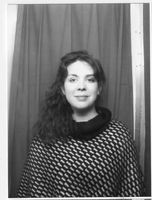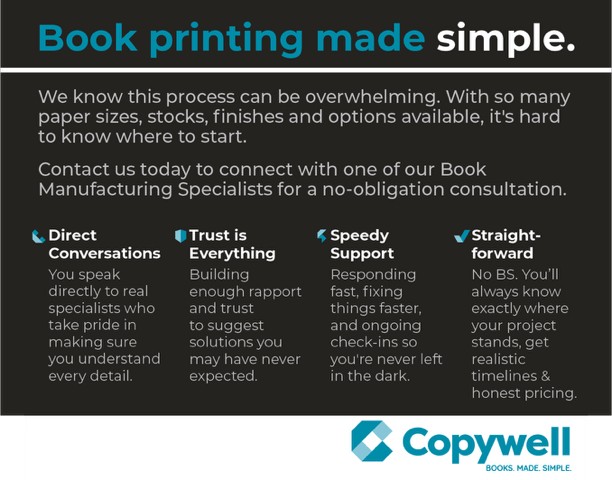Where Are You Now? Author Tyler Clark Burke on Working in Publishing and How to Write a Great Book for Kids
"Where does it go?" is one of the most common questions parents are asked by their little ones. Early on, children are fascinated by the disappearance of natural things in their world. Snow covers everything, then vanishes. The sun opens their morning only to be replaced by darkness as their day winds down. In cases where a child loses a loved one, those conversations can be especially difficult to manage.
With her new book, Where Are You Now? (Owlkids), author and illustrator Tyler Clark Burke gives parents and their children a helping hand to get through challenging questions about mortality, using examples from nature to help explain the cycle of life and death in ways both comforting and illuminating. Featuring readable language and gorgeous watercolor illustrations, Where Are You Now? helps put loss in perspective for young ones, giving them a sense that even though someone is gone, they can still remain in their hearts and memories.
We're thrilled to welcome Tyler to Open Book today as part of our Going Pros and Cons series, where she talks about a very special first public reading, the importance of a literary community, and why you should never stop learning.
Going Pro(s and Cons) with Tyler Clark Burke:
My best public reading or event experience:
My very first reading was at my son’s daycare center. The staff went to enormous lengths to make the day special, including setting up chairs, postering, catering the event—even making custom bookmarks. I was deeply moved. And so was my 3-year-old son Hugo. The minute I started reading he moved right in front of me, cupped his hand over my mouth, and hugged me so tightly no one could hear the story! In the end, he agreed to help me by loudly reciting the words from memory—which was super fun—and now I wish he could join me for every reading!
The thing that surprised me most about the publishing process:
I’ve worked in art, film, news media, event promotion, design, and music. I even worked briefly in a bank. All these jobs and work cultures seemed almost identical to me, but children’s book publishing has been very different—different mostly in a wonderful way. I love that the industry feels run by women—smart and radiant women who indeed rule.
I entered picture book publishing in my late 30s/early 40s, after having two children. When I was younger I thought I could do everything and knew everything, but the older I get I find the less I know. I used to work really immediately. I drew quick pictures, threw quick parties, and lived a quick life. These days, things take me longer because I’m slower, but also because I’m interested in being slower and more reflective. A by-product of “knowing it all” is a closed-mindedness to learning and improvement, and right now I feel like I am only learning and improving.
So, the biggest surprise is probably how much I had to learn? And also how much I’m loving the (cursed) process?
Your CanLit News
Subscribe to Open Book’s newsletter to get local book events, literary content, writing tips, and more in your inbox
One other thing I love about the publishing process is the connection between writers, editors, and literary agents. These relationships are so vital, new, and interesting to me, especially as someone who had previously only worked independently.
A writer whose career I admire and why:
With certainty I’m most drawn to prolific authors, people who can’t not work; people who I imagine stranded alone on an island, arranging rocks and tracing pictures in the sand because they just can’t stop puzzling and rearranging their world into better shapes.
Margaret Wise Brown. Smart, busy, fun, unpredictable, ahead of her time. Of any children’s book author, I’d most like to turn back the clock and spend an afternoon “beagling” with her, followed by an evening of drinks and hi-jinx.
Daniel Pinkwater. Unique, irreverent, playful, and creative. The Big Orange Splot inparticular embodies what I loved about growing up in the 70s (the book’s color, message, playfulness, and tone). Daniel Pinkwater’s off-kilter kookiness is part of my favorite America.
Shel Silverstein — I love how Shel Silverstein did so many things. I love his mind, his art, his versatility, and his handiness at seemingly everything he did (arguably including his frequency at the Playboy Mansion). I love his use of language—particularly rhyme (which I think is an essential part of language for children and frustratingly not in fashion at the moment).
Richard Scarry — Richard Scarry was a talented illustrator (I love Good Night, Little Bear), but I admire him also as someone who responded to changing social contexts and went back and revised his earlier books.
Sandra Boynton — Sandra Boynton’s someone whose work I didn’t quite connect with until having children, and then I fell in love with Birthday Monsters. Birthday Monsters is a perfect book. And Sandra Boynton appears to be perfectly fun, persistent, smart, and busy in a way I want to forever be.
Sylvia Plath — My father recently gifted me Sylvia Plath’s The It-Doesn't-Matter Suit and Other Stories, and it is of course a wonderful collection of work she created for her children. Days later I came across this quote attributed to her and framed it immediately in my mind:
“And by the way, everything in life is writable about if you have the outgoing guts to do it, and the imagination to improvise. The worst enemy to creativity is self-doubt.”
― Sylvia Plath,The Unabridged Journals of Sylvia Plath
The advice I would give someone trying to get a book published for the first time:
I am still relatively new to picture bookmaking, even after 8 years. During this time, I’ve released two books (soon three), written a dozen others, and shelved one title entirely (at least for the time being).
But even at the very beginning, within hours of my first book release, I started to receive emails and manuscripts from friends and acquaintances asking me how to get a publishing deal. One email even came from Dubai! And unfortunately, this is not a question I (or perhaps anyone) can reliably answer—my path included Owlkids’ John Crossingham spotting my hand-drawn rock show posters—but I can share some of the suggestions I’ve passed along to others based on my own process and experience.
I think it’s important to start by evaluating your project. Why do you want to write a children’s book? Does your story have broad appeal (if not, is it an important niche book)? Are you diversity-minded in your writing and approach? Has someone else told your story better? Sometimes the publishing industry wants books that are, in fact, iterative, but I think it's preferable to begin any creative endeavour with something truly your own.
Finally, are you doing this to make money? If you’ve answered YES to that last question, I’ll share the same caution that was imparted to me at the beginning of my book career. It’s hard to make heaps of cash in children's publishing, especially on your first book. Of course, there are always outliers. I think Drew Daywalt’s first book, The Day the Crayons Quit, sold at least 1.5 million copies? But many factors contributed to making that book a hit (including Oliver Jeffers’ artwork). After speaking with more established Canadian authors, I’ve learned that many writers rely on—and do well with—grants, classroom visits, and awards.
Finally, here are a few thoughts I recently shared with someone looking for publishing advice (bearing in mind I’m still learning myself):
- Text and art should complement each other but not duplicate each other. If helpful, add illustration notes to each page so you can clearly separate words from what can be communicated through art.
- Every word on the page should need to be there. This simple but life-changing advice was given to me by savvy editor Karen Li (from Owlkids).
- Write your story and then walk away. Come back to your manuscript when you have the distance and clarity to edit your work properly. Read your story out loud and to children. Read other people’s stories out loud and to children. Format your manuscript correctly (learn online), and download a 32-page book dummy to correctly pace your story with page turns.
- Art matters. My literary agent usually requests at least three finished illustrations to share with a manuscript. If you're hiring an illustrator, find an experienced illustrator and pay them their rate. Good art can sell a book, especially if the editor feels they can work with you on the text.
- Use technology. If you’re illustrating the book, invest in an iPad and Procreate. Learn Photoshop so you can color-correct your art. I paint my books with watercolor, but use Procreate to pencil my pages and it has saved me weeks of time.
- Find a community. Join Facebook groups focused on picture book writing and illustration. Many of my friends have also had great experiences with both SCBWI and CANSCAIP.
- Be patient. It can take months or years to develop a book, and the same amount of indefinable time to find a publisher. If you do land a deal, it will typically be another 1-2 years before the book comes out.
What I think about writer-in-residence programs:
I recently attended the Banff Summer Writing Retreat and the Banff Center is now one of my favorite places on Earth. I want everyone to go. Join the mailing list and check their website often (I hear there will be more upcoming programming dedicated to YA and sci-fi). In fact, I was so obsessed with my two weeks there I tried to document every salient detail—including my room, the food, the various facilities, the feeling of walking on campus, the art, the library, the frequent deer sightings—even the faces of some of the wonderful writers I met (if you’d like to see these pictures, I’ve saved them under Highlights on my Instagram page).
The thing(s) I need at/during/before an event or reading:
I pretend to be someone else when I do a reading. I pretend to be someone who loves to stand in front of an audience and command attention. Someone unafraid. It really helps.
_______________________________________________
Tyler Clark Burke is an award-winning creative director, writer, illustrator, and artist, and author of Bill Bowerbird and the Unbearable Beak-Ache. She co-founded the acclaimed record label Three Gut Records, and continues to work creatively with musicians. Tyler lives in Toronto with her husband and two children, Rooksby and Hugo.





